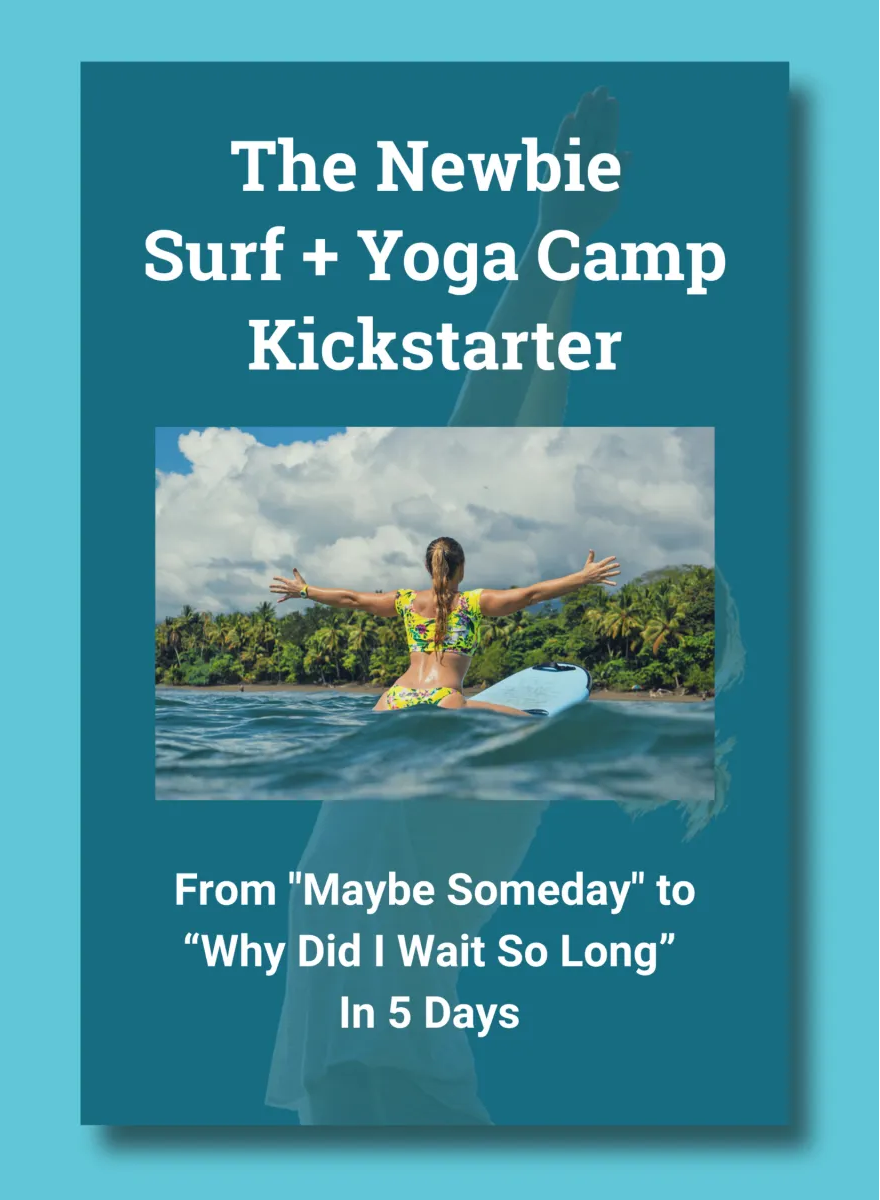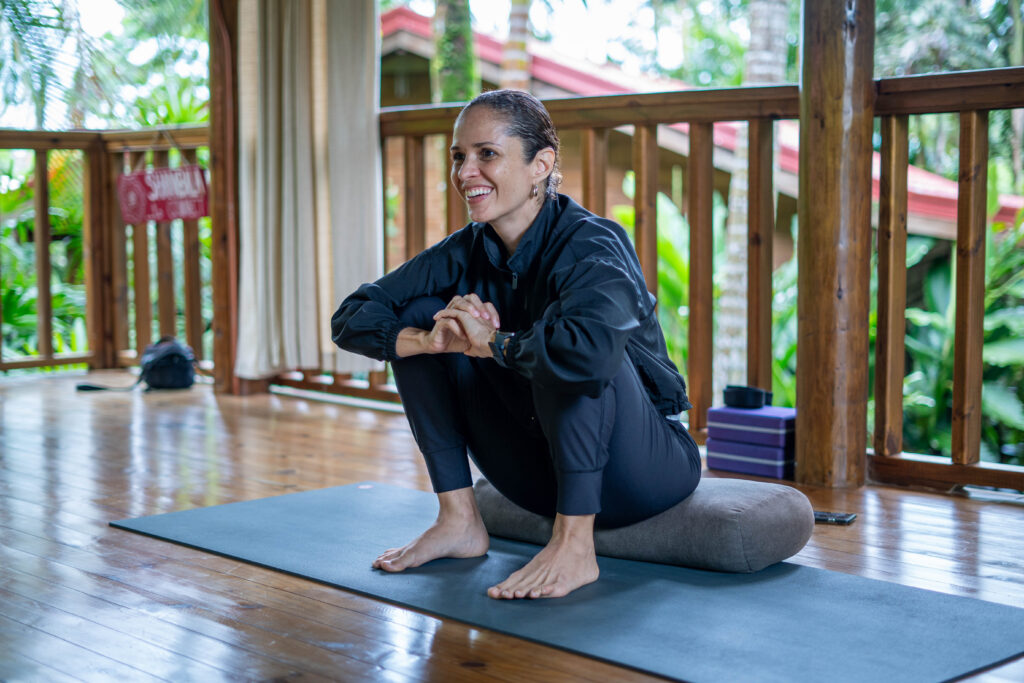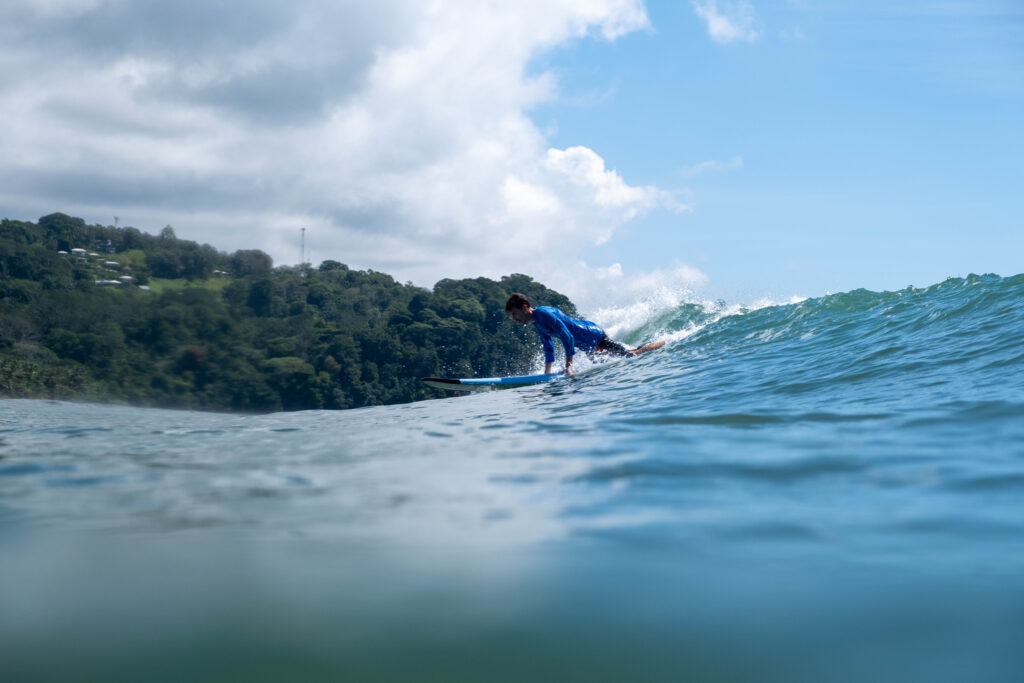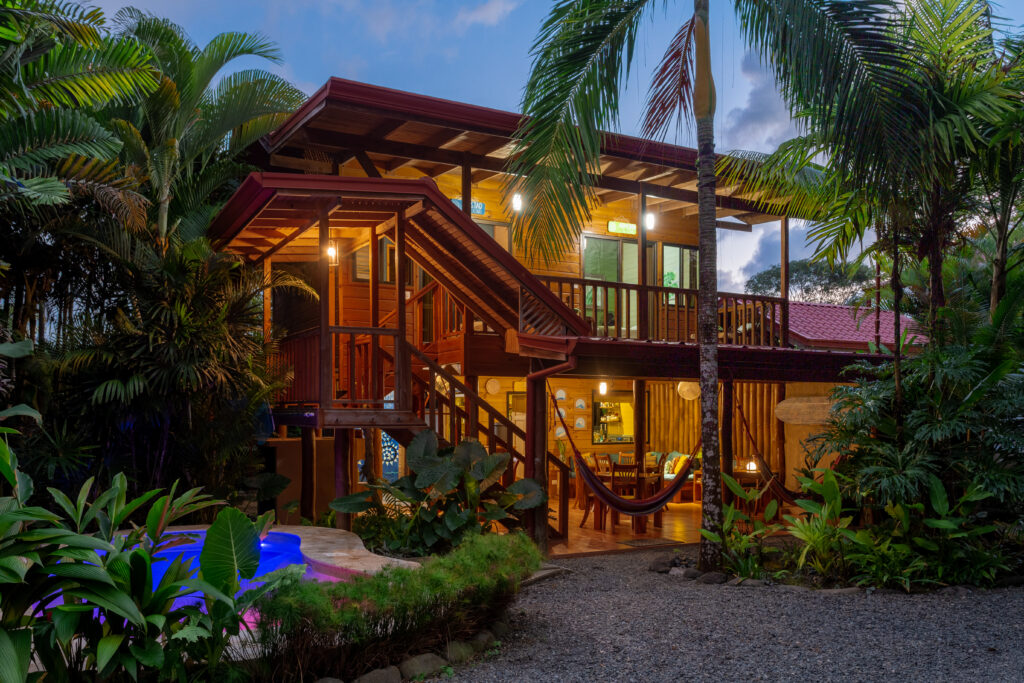Learning to surf is more than standing on a board in the ocean. At its core, surfing is a physical, spiritual, and communal practice that connects us to the natural environment. Anyone can teach themself how to surf, and although the journey isn’t always easy, it will be worth it.
Most surfers, myself included will tell you surfing is one of the most meaningful practices in their life. But the meaning doesn’t just come from riding a board, although that is the fun part. The significance of surfing is found in the process, the learning, and the time spent in Mother Ocean with friends and loved ones.
Despite the onslaught of online surf gurus and surf courses promising an easy quick path, learning to surf is a journey, one that anyone can take free of charge. In fact, Bodhi Surf + Yoga offers free videos for every step in the process on their YouTube channel.

7 Day Surf Camp
Week long, set-date, surf vacations that invite you to learn the art of surfing while learning about Mother Ocean, engaging with the community, and awakening the inner surfer.
Learn MoreI consider myself a “self-taught” surfer. However, I had the good fortune of a surfing father who would take me to Doheny State Beach in Southern California and push me into little cobblestone peelers on a board we referred to as “the widowmaker”—the name was in reference to a surf session that left my cousin Andy with a scar across his stomach years earlier.
Being pushed into a wave is a common way for beginners to have a taste of wave-riding and is usually a part of every learner’s journey. It’s hard to consider this truly surfing, however, because the true act of surfing requires both paddle strength and mindful timing to catch a moving wave.
Again the surf gods ruled in my favor when I had the opportunity to join my school’s surf team (thank you, Coach Schultz) and I was able to practice catching waves on my own. It took about a month of practice before I could finally catch waves consistently.
The time it takes to learn how to surf can vary from days to years and greatly depends on the beach, the waves, the crowd, and the board you are on.

The process of learning how to surf is generally expedited at surf camps because it gives you the time and repetition needed to gain confidence quickly. As a surf instructor with eight years of experience teaching, I can confidently say that although a single surf lesson on its own can be a joyful and exhilarating experience—it’s simply not enough to learn how to surf.
As a surf instructor at Bodhi Surf + Yoga, I can also say that I’ve seen surf students start the week with the absolute basics and end it by charging set waves out the back and riding down the face of the wave successfully. Of course, this always depends on the conditions and the surfer’s physical and mental strength.
In the end, although it may take some people longer than others, anyone can and should teach themselves how to surf. Again, if you are interested in streamlining the process, I recommend dedicating as much time as possible to it. For example, I would like to attend the Bodhi Sessions 14-day Adult Surf + Yoga Camp.

What to Consider Before Teaching Yourself to Surf
As you begin the process of teaching yourself how to surf, it’s important to take the time to educate yourself before you buy a board and paddle out. The key things to think about are 1) your swimming skills and comfortability in the ocean, 2) what gear you will use, 3) common surf etiquette rules, and 4) a little bit about the history of surfing.
Bodysurfing at the beach is an incredibly important way to assess your swimming skills and comfort in the ocean. You should feel comfortable submerging your face in the water and swimming under oncoming waves. Learning to surf the waves with only your body will greatly increase your chances of success when learning with a board. Ocean skills should be combined with an adequate level of fitness for physical activity.

Next, you will want to consider what type of surfboard you will use. There are many different types of surfboards, but generally, the longer and wider a board is, the easier it is to catch waves and ride. Any surfboard will need fins, a leash, and either wax or a traction pad to keep from slipping off. Other “gear” would be a wetsuit, depending on your location, sunscreen or sun protection, and earplugs if necessary. If you’re learning in a tropical location, consider clothing that will protect you from rashes and sun exposure.
Learning basic surf etiquette is also important before your first session, especially when other surfers are present. The most important rules are to stay out of the path of other surfers, control your surfboard, and remember that it’s only one person per wave at a time.
Lastly, consider learning a little bit about the history of surfing. The sport is traditionally associated with Polynesian culture, in which surfing was seen as a spiritual and recreational practice in ancient times. The sport is now practiced globally, with Olympic medalists representing Brazil, Hawaii, Japan, South Africa, and Australia.
Catching Your First Waves
Putting yourself in the right place at the right time to catch a moving wave in the ocean is no easy feat. The process begins on the beach by identifying the ever-changing ocean and wave conditions. It requires generating or reading a surf report to determine if the beach and conditions suit your skill level. It also demands learning how to control your board (remember your surf etiquette) and paddle out past the white water. Only then comes the actual act of getting to your feet on a moving wave.

First, understanding different types of ocean waves will help you generate a surf report—analyzing the tide, wave height, wind, and potential hazards. You can also learn how to read a surf report which is easily available online at surf forecasting websites. These reports are often inaccurate and therefore in no way a substitute for your own two eyes at the beach.
After deciding to paddle out, you’ll most likely start by learning how to control your surfboard and catch waves in the white water. Learning to stand on your board in the white water is effective because it allows for repetition. This gives your body and mind a chance to gain muscle memory for the “pop-up,” the motion of standing up on the board from a prone position.

Once the conditions are right and you feel comfortable doing so, the next step is to paddle out past the breaking waves to catch a “green” wave or unbroken wave. This is the longest part of the learning process, as it takes physical strength, confidence, and experience to watch the waves and predict their movement. After you’ve caught the wave, you’ll need to stand up or “pop up” on the board.
Becoming a Surfer
Like anything worth doing in life, surfing takes patience and perseverance. Over time you will start to develop your surfing style and improve your overall fitness level. At Bodhi Surf + Yoga we believe yoga is the perfect complement to improve your overall mobility and balance for surfing. Yoga also facilitates the mind-body connection—a critical element for teaching yourself how to surf.
As our surf practice improves, the mind-body connection becomes stronger and stronger until we start to feel an oneness with the ocean itself. This is often translated into caring for the health of the ocean and its inhabitants. The last step of becoming a “true surfer,” in my opinion, has three parts: environmentalism, travel, and sharing the stoke.

First, becoming a surfer means changing our daily habits, which contribute to the degradation of the ocean environment. This means reducing our single-use plastics, limiting the use of chemicals that drain into the ocean, and taking care of our carbon footprint.
Secondly, surfers have a long history of travel and exploration. This means straying from the traditional, comfortable hotels to find unique waves and learn from the people who care for them. Taking a surf trip is a surfing right of passage, and learning how to reduce your impact on remote places is part of it. If you’re considering Costa Rica as a surf destination you’ll need to assess available flights, the time of year, and need-to-know safety information.

Lastly, it’s time to share the stoke. As a surfer, you will now enjoy the mental, spiritual, and health benefits of surfing. Share that stoke with your kids, and other surfers in the line-up, in addition to giving back to the beach community you are now a part of.
Remember that it’s never too late to learn how to surf, find meaning in the ocean, or give back to local communities.
Discover all our resources for learning how to surf at our Bodhi Surf + Yoga Surf Hub!

For First-Time Surfers
You Don't Need Experience. You Don't Need Gear. You Just Need This.
Our free 5-day email course that reveals the 5 myths keeping beginners at "I'm not ready" instead of catching their first wave and finding inner peace-and how to overcome them fast.
Change the heading on the Separator tab ->
Search
The Newbie Surf + Yoga Camp Kickstarter
Bust the 5 biggest myths about going to a surf and yoga camp so you can stop procrastinating and start catching waves - with our FREE 5-day email course.
Change the heading on the Separator tab ->
Most Read Blogs
What is the Meaning of Anjali Mudra?
May 27, 2020
Fitness for Surfers: Workouts, Exercises & Training
February 10, 2022
The Best Places to Eat in Uvita, Costa Rica
May 19, 2022
How to Get From SJO to Costa Ballena, Costa Rica
May 31, 2018
Change the heading on the Separator tab ->
Categories
Categories
- Bodysurfing (5)
- Food (8)
- Responsible Business (6)
- Surfing (68)
- Travel (65)
- Yoga (44)
Change the heading on the Separator tab ->
Newsletter
Thanks for subscribing! Please check your email for further instructions.
Change the heading on the Separator tab ->
Follow Us
Carly Stoenner
Change the heading on the Separator tab ->
Read more
Pilar’s Ayurveda Exploration: Bringing Ayurveda Home
Words by Pilar
We’re thrilled to have you join us for the fourth of Pilar’s Ayurveda series blogs! We’ve already learned so much about Ayurveda – the ancient science of life. In Pilar’s last three…
Small Ways to Progress Your Surfing: Mastering the Pop Up
Words by Guest Post
Welcome back to our three part series on Small Ways to Progress Your Surfing. In the first blog, we explored: This time around in the second blog of the series, we’ll be…
5 Reasons Why a Surf + Yoga Retreat Should Be Your Next Big Bucket List Adventure
Words by Travis
If you’re reading this, chances are you’re experiencing a little restlessness. You’ve scrolled past the passive beach vacations and you know, deep down, that your next trip needs to be different. It…



